Henry II’s style spread during the last Valois kings, from Henry II to Francis I, until the start of the 17th century.

Image source: https://search.creativecommons.org/photos/24dde232-2d33-4872-8659-a46252c785ed by Lejeune Grégory
History of Henry II Style
During this period, Italy inspired French architects and sculptors. Further, they brought several Italian artists from Raphael‘s or Michelangelo‘s school, Saint-Porchaire, over to France. Below is an example of low-fire white pottery made in France in the middle years of the sixteenth century. It took the name of Henri II-ware because some pieces are in the king’s name.
It is white faience ware designed for the elite French public. Only about sixty pieces survived, but they all clearly show the influence of the Mannerist movement. The production of art from Saint-Porchaire artists created unique pieces by bouncing ideas off each other. For example, Basic clay shapes were put on the wheel and refined. Then, a lead glaze added to the surface gave it a golden transparency. It is also possible to see distinctive designs derived from Mannerist in these newer pieces of art.
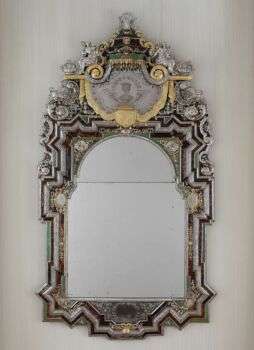
Image source: https://www.metmuseum.org/art/collection/search/207785
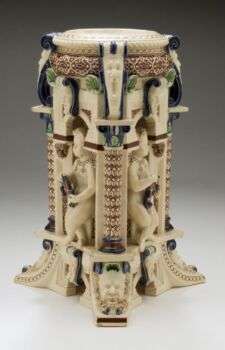
Image source: https://search.creativecommons.org/photos/835a1ae9-0232-4e7c-9cbc-1be27171e064 by Fæ

Image source: https://search.creativecommons.org/photos/c15a6db1-502d-4b50-a2c8-6108d5d58d97 by Yair Haklai
Henry II Furniture Style
During this period there was an important artistic activity that led to the birth of albums of engravings inspired by classical antiquity. The authors were Jacques Androuet du Cerceau, a Parisian, and Hugues Sambin, a Burgundian. They sold albums in their cities, such as Paris and Dijon.
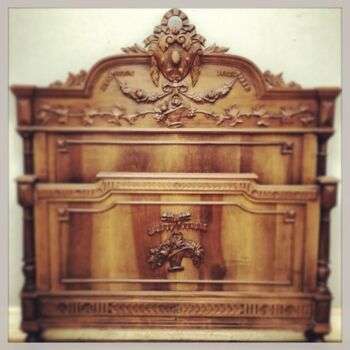
Image source: https://search.creativecommons.org/photos/0f314b32-cfd4-4386-931e-4cf9c6a9f9a3 by frenchfinds.co.uk
The schools of the Henry II style are different because of their way of carving: the one of the Île de France, and the one of the Burgundy. The Burgundian style used a lavish carving suggesting richness. Comparatively, the Île de France school preferred the elegantly sculpted goddesses of Jean Goujon.
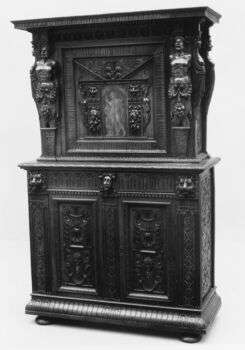
The Henry II style featured an architectural character, similar to the Gothic Style. For example, the armories had four doors: two above and two below, separated by pilasters. The architectural effect improved by the introduction of niches with statuettes. Mythological figures were commonly present motifs in these pieces.
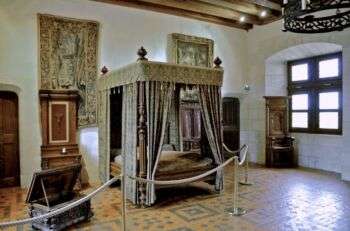
Image source: https://search.creativecommons.org/photos/8a749dce-cbc7-4eba-a241-394afc406346 by Geoff Livingston
Rectangular tables have chimeras and caryatids engraved, and even colonnades and longitudinal arcades.
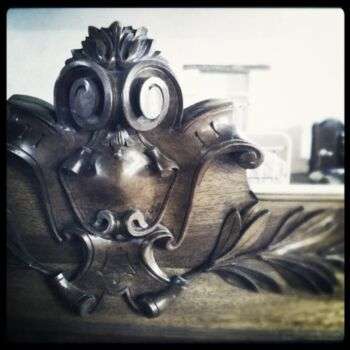
Image source: https://search.creativecommons.org/photos/c8c3f21e-13a7-40d3-b2d8-dfc7f86b983f by frenchfinds.co.uk
Henry II Style Painting
Hans Holbein’s “The Ambassadors,” one of the best-known paintings in the world, was created during the Tudor period. It is a double portrait, and it depicts several well rendered objects, the meaning of which causes important debates. It is preserved in the collection of the National Gallery in London.
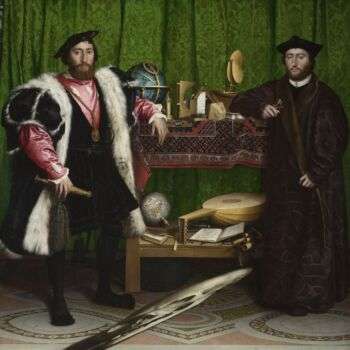
Image source: https://search.creativecommons.org/photos/75cd11d0-865d-4d40-9d4e-69405b34b28e by DJANDYW.COM
Architecture
Many products of the Henry II style were architectural pieces that still exist today. Rosso Fiorentino, Francesco Primaticcio and Sebastiano Serlio became Henry II’s court artisans, building up his gallery and the Aile de la Belle Cheminée.

Image source: https://search.creativecommons.org/photos/35f06f92-736f-476b-a6bb-caef66984b25 by Sailko
French architect Pierre Lescot and sculptor Jean Goujon restored the Palais du Louvre that laid around the famous square court. The Château d’Anet, was commissioned by Diane de Poitiers, mistress of Henry II, and was designed by Philibert Delorme, who studied in Rome. The very mannerist estate hosted a statue of Diana by Benvenuto Cellini, that was in France at the time.

Image source: https://search.creativecommons.org/photos/0eb5d046-1159-4783-8520-1dbc2de62dfb by olive.titus

Image source: https://search.creativecommons.org/photos/872b0e45-fa02-41e5-b87c-b0ff1a5500da by olive.titus
In 1564, Delorme began the project for the Tuileries, which became the most surprising Parisian palace of the Henry II style. It also featured several mannerist classical themes, for which Delorm developed his own “French order” of columns.
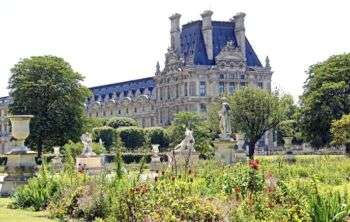
Image souce: https://search.creativecommons.org/photos/7526b389-22ab-47e0-9d20-bc8fa2d994d2 by archer10 (Dennis)
Info source: https://www.britannica.com/art/Henry-II-style
